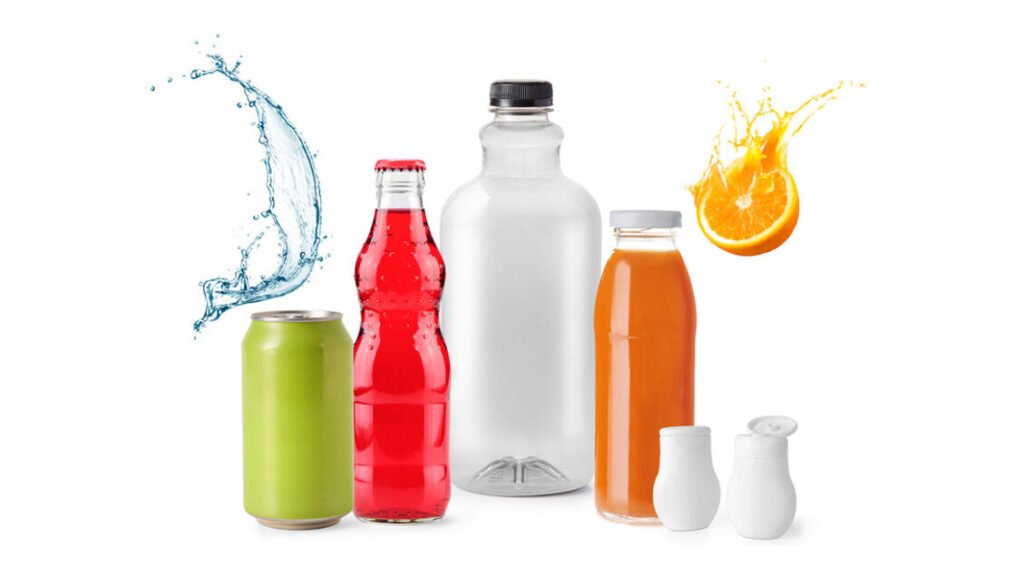With the vocal efficiency of Michelle Department in Santana’s 2002 tune “The Sport of Love,” the pop singer proclaims “It simply takes slightly little bit of this, slightly little bit of that/It began with a kiss, now we’re to bat,” depicting highs and lows of the sport of affection.
The American shopper is experiencing their very own recreation as they want their drinks and packages to have “slightly little bit of this, slightly little bit of that” to maintain up with their busy life.
“The beverage market calls for packaging that balances performance, comfort, and sustainability as customers search health-focused, on-the-go, and premium ingesting experiences,” says Becky Donner, senior vp of selling, design ,and engineering at St. Louis-based TricorBraun. “The rise of useful drinks, from protein shakes to gut-friendly kombuchas, requires superior plastic packaging that preserves lively components whereas making certain portability.
“In the meantime, the mocktail and alcohol-alternative pattern drives demand for light-weight, shatterproof bottles that supply a premium aesthetic,” she continues. “With the American on-the-go way of life, single-serve and right-sized packaging — like mini bottles and resealable PET codecs — are important for comfort and portion management.”
Donner moreover calls consideration to the affect of eCommerce and direct-to-consumer gross sales prompting the necessity for sturdy, light-weight plastic to assist delivery sturdiness, in addition to the usage of customization and high-end finishes.
“For all these traits, crucial consideration is that the packaging should at all times shield and protect the beverage inside,” Donner says. “On this evolving panorama, plastic packaging stays a essential enabler of innovation, adapting to how customers drink immediately.”
Plastic in demand
Given all these variables throughout the beverage market, producers proceed to show to plastic to assist their packaging wants.
“The demand for plastic bottles within the beverage market stays sturdy attributable to their comfort, sturdiness, and cost-effectiveness,” Donner says. “They’re extensively used throughout numerous beverage classes, together with water, tender drinks and useful/wellness drinks.”
Though shopper desire for light-weight/moveable packaging, on-the-go consumption, and recognition of useful and wellness drinks are among the many components in plastic packaging’s favor, Donner additionally highlights the efforts the business has performed to handle sustainability.
“Sustainability targets have led to a shift in direction of extra eco-friendly packaging options,” she says. “Corporations are more and more adopting recycled supplies, equivalent to rPET, and exploring various packaging choices to scale back their environmental footprint.”
Explaining that recycled PET (rPET) helps scale back waste and carbon emissions, Donner notes that rPET significance continues to develop because it offers a substitute for virgin plastic.
Mark O’Bryan, chief operations officer at TricorBraun, additionally notes how essential rPET is to the way forward for packaging, whereas citing examples of manufacturers who’ve embraced packaging modifications to assist sustainability efforts.
“An important instance is Sprite switching its bottles from inexperienced to clear PET to enhance recyclability and reuse throughout numerous functions, eliminating the necessity for separate recycling streams,” he says. “Recyclers are additionally persevering with to refine and enhance the cleansing and processing of rPET to assist a round method to plastic packaging. Finally, it’s about preserving plastics in circulation and out of landfills. In Europe, sustainability laws are already pushing for greater rPET content material in packaging. The shift will proceed to realize momentum, lowering reliance on virgin plastic.”
O’Bryan additional highlights the efforts that TricorBraun is dedicating to assist sustainable packaging options.
“One space of focus is fiber-based packaging, generally used for clamshell containers,” he says. “Historically, fiber-based packaging has included plastic liners that act as boundaries for leak safety, however it may be deceptive to customers searching for a totally sustainable answer. Producers are exploring natural coating alternate options that eradicate the necessity for a plastic liner whereas stopping liquids from permeating.
“Others are experimenting with tree-based fibers and industrial hemp, with a imaginative and prescient of integrating development, bottle manufacturing, and filling right into a single facility — lowering Greenhouse Fuel (GHG) emissions from delivery,” O’Bryan continues. “In Europe, insurance policies are shaping packaging selections. In Germany, for instance, customers pay a charge for aluminum and glass packaging, encouraging recycling. Curiously, aluminum typically carries a better charge than glass attributable to its higher power demand for recycling, prompting extra sustainable buying choices by the buyer. Whereas this mannequin isn’t adopted within the U.S., it highlights how monetary incentives may enhance recycling charges.”
Past developments in supplies as alternate options in addition to supporting enhanced recyclability, Donner provides that plastic packaging is embracing good expertise and enhanced functionalities.
“Sensible packaging improvements, together with QR codes, create interactive shopper experiences, which is essential as a result of ‘expertise’ is turning into more and more useful to customers immediately,” she says.
This all comes into play as packages really feel extra strain to face out on the shelf.
“[I]t’s more durable than ever for manufacturers to face out on shelf, so differentiating package deal design by way of customized options helps drive curiosity and engagement, in the end serving to manufacturers win on the level of buy,” Donner says.
As shopper calls for place higher wants on beverage packaging, plastic bottle producers acknowledge the significance to hit on sustainability and high quality.
“The way forward for plastic beverage packaging features a continued deal with sustainability, with developments in biodegradable and compostable supplies,” Donner concludes. “I imagine there will probably be higher emphasis on customization and personalization to satisfy evolving shopper preferences.”
